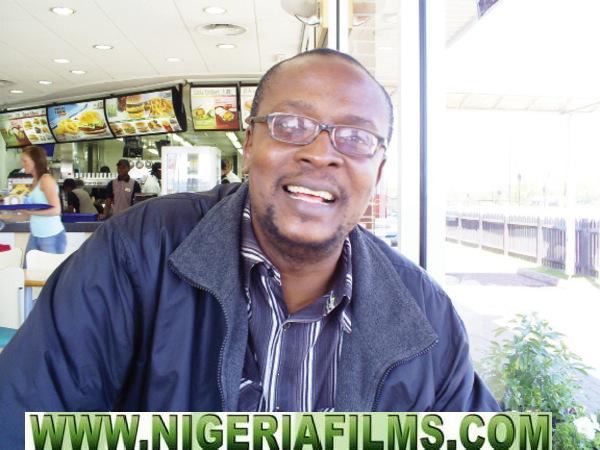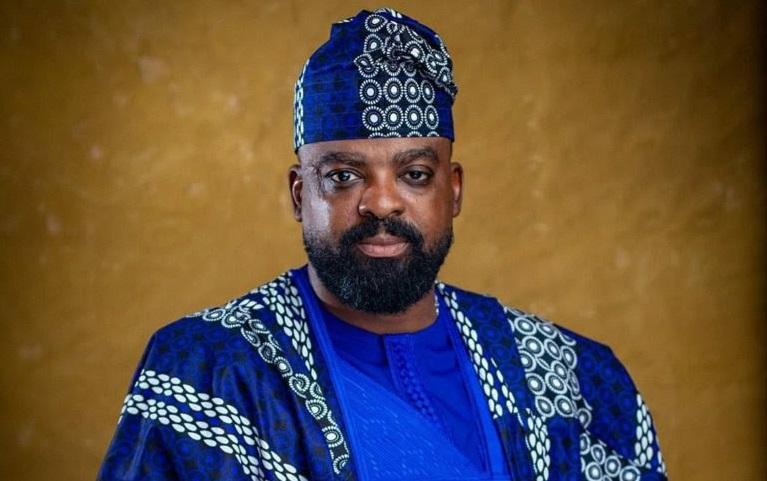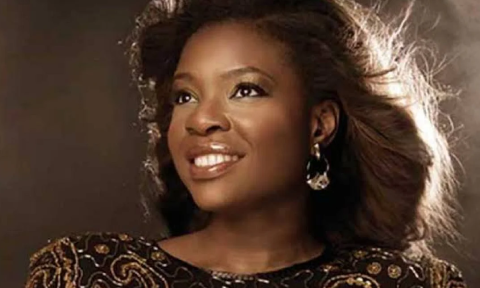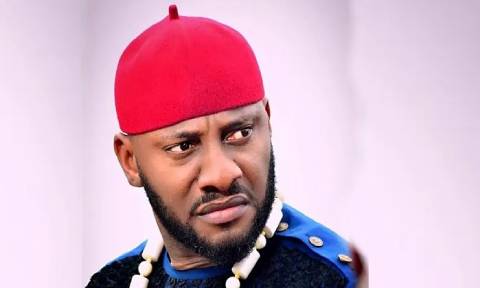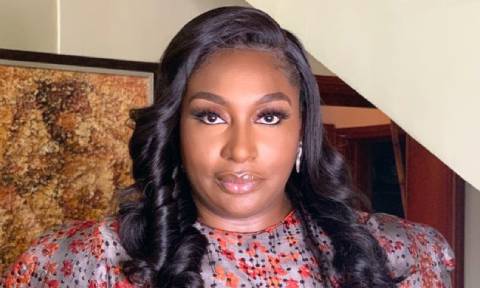Foremost cinematographer in Nollywood, Tunde Kelani, bounces back from the setback of the heavily pirated ‘Arugba’ with a new film, ‘Ma’ami’, starring Funke Akindele. In this interview with NEXT, Kelani talks about the making of ‘Ma’ami’ and his plans to get the film to the masses.
How did Arugba do commercially?
‘Arugba’ is a flop. There is no doubt about it because we were really modest in our expectations; we bought the recommended holograms, 100,000 from the National Film and Video Censorship Board and we didn’t sell 50,000. We still have thousands and thousands of copies of the film. There is no way we can sell with that level of piracy. Right now, we have in our possession three pirated versions and then one London pirated version. All our films have been pirated but there had never been such an orchestrated attack, like that of ‘Arugba’.
How do plan to forestall this with your forthcoming film, Ma’ami?
I think that generally this is a reflection of the Nigerian society. The industry is suffering from lack of the necessary infrastructure so this is going to go on for a long time. I don’t believe the government at this time has the capacity to deal with it, especially now when elections are coming. If I carry a few samples of pirated films to any police station, I’m sure that I will meet more difficult issues that need the attention law enforcement agencies.
We have to adopt the physical division model in Nigeria where I have to release VCD or DVD and we have to physically move it from region to region, town to town.
Broadband internet access is at the moment less than two percent penetration in Nigeria. So, that suggests that we have to do physical distribution for a long time. The desperation in piracy since ‘Arugba’ has gone worse… I understand that in the market today on any release, in the evening of the same day the pirated versions will come in the market. It suggests that there is no way we can risk physical distribution of ‘Ma’ami’ so we have to come up with another model for making sure that it gets to the people.
Can you talk about your new strategy?
I’m passionate about reviving the cinema going culture. That’s why I initiated the mobile cinema project and I got support from the Lagos State Government. We screened ‘Arugba’ in the 57 local governments and development areas of Lagos State. We took the film on the road and it showed free, in the open air to Lagosians. I’ve been toying with the idea of developing at least 30 cinemas in Lagos State, working with the local governments. I’m already in discussion with the Association of Sports Viewing Centres in Lagos State and I’m hopeful that perhaps we can put together a chain of 200 such centres. Secure, comfortable centres that can seat a minimum of 100 people. This way, I plan to take the film to the grassroots.
What about the rest of the country?
First of all, my focus is on Lagos State because it is viable and accepting; and we have Governor Babatunde Raji Fashola who is keen and he’s been very encouraging and supportive. If this model works in Lagos State, then we can explore the possibility of exporting it to the whole of the South West and by extension the whole country.
What can be done to widen the acceptance base of the Yoruba film?
I don’t think that’s a problem because now we are moving into the area of indigenous cultural expression. Countries like China, Japan or India for instance, how [have their films] been accessible? The whole world has been waiting, but the film has to be of a reasonable quality and standard. Japan and India [make] films of quality standard, so that’s all we have to do. Already, some of the films we have produced (at Mainframe) have been subtitled in English, French and in the case of ‘Saworoide’, we did a Portugese subtitling. So that’s what we should do. Of course, I will be excited about the possibilities of meeting a great indigenous cultures like, for instance, Japanese and Chinese, rather than looking to following Hollywood. So for me, Yoruba cinema has a great prospect.
You’ve been filming ‘Ma’ami’ with Funke Akindele, Wole Ojo and the young man you are introducing to cinema for the first time, Ayomide Abati. What has that experience been like?
Filming ‘Ma’ami’ is exciting because it has some element of my childhood in it. For example, when we combed the whole of Abeokuta looking for a primary school that has a football field, I realised it was becoming rare because education standard has fallen so low that they don’t consider such development part of education anymore. I had to return to my own Oke-Ona United Primary School in Abeokuta and luckily we still had a kind of a field that we used 50 years ago. It’s still there but in bad shape. The buildings are still standing although they are crying out for [renovation].
Again, we scouted for possible appropriate locations but we didn’t find any, so we had to return to my own family compound; and for me it was like going back home. We had to repaint all the houses in the neighbourhood and our single interior set for Funke Akindele and the boy actually was shot in our own house. I found a boxfull of documents which my father had kept away. Going through these documents, I found a Christmas card that was sent to me in 1960 – from a girl and it was ‘With love from Yetunde’. I couldn’t even remember who it was! It was going back to my own childhood and my own neighbourhood and I knew the terrain like the back of my hand. That’s why making the film is special to me, I could see things from my growing up years.
There were reports you had dropped Funke Akindele from the film but she’s still in it. What actually happened?
It was a misunderstanding. After I had talked to her and released the script to her, I was coming from my ophthalmologist and there was a video shop. I saw the poster of a film called ‘Iya Mi’ and it was Funke Akindele on the poster. I was shocked because of the closeness between the titles, ‘Ma’ami’ and ‘Iya Mi’. For a moment I was concerned that it might mislead some of the audience because I had received a few calls from people asking me if the film was out. I was apprehensive that ‘Ma’ami’ might be mistaken as Part two of ‘Iya Mi’. I sent for the film, I saw it and what I saw was that Funke was not even playing the mother in the film, she actually played the daughter.
I thought something was funny… I decided that we were going to change her, to do another film entirely. She heard this news and came to me and explained her own side of the story. I thought Funke needed the film, she wanted to do ‘Ma’ami’. I thought she genuinely wanted to be in the project and I was convinced.
Of course, there is a reason why I decided to work with Funke Akindele because I have followed her career closely; and in (my films) ‘Narrow Path’ and ‘Abeni’, she had played minor roles, supporting roles. I was waiting for the right story to cast her. What was strategic for me, it was not a glamorous role and in the film, she had a change of costume only once; wearing the same thing again and again. She’s not the glamorous star that everybody expected. I think this was a challenge for her and she had to play convincingly the mother of a 10-year-old.
And the young man that you cast as her child – you know what they say in Hollywood: never work with animals or children. How was it?
Ayomide is a child in the neighbourhood in Oshodi where we live, he’s quite lively and gets along with everybody. But my worry… at this point I have to appeal to parents because we are gradually getting to a point where it is becoming very difficult to find young or adult Yoruba actors and actresses who can speak the Yoruba language. I think it’s becoming a challenge. For about two or three days, we were really disturbed – both the young Kashimawo (Ayomide Abati) and the adult Kashimawo (Wole Ojo) – because it’s now a problem and this is a result of when consciously parents discourage their children from speaking their own language or practicing their own natural culture.
I think that’s the result of an identity crisis and we had identity crisis on the set. I think that Ayomide has learned from that experience and I think he will be redeemed. But I think it’s a crisis in the Yoruba nation. There is no doubt in my mind that the children of the elite and the lower class no longer speak Yoruba in their homes. I doubt even the lawmakers, if any of their children speak Yoruba at home.
Can you tell us more about the making of Ma ami from a filmmaker’s point of view?
I think ‘Ma ‘ami’ is the beginning of another era because we are at a point now in digital media where we have access to great technology and it is the first and only film that I have shot digitally in what can be called 35 mm. You know they talk about shooting 35mm celluloid; this is the digital equivalent of it. In other words, we shot in 4K-to-a-35mm-censor. I think this is exciting. It is just like when I discovered photography in those days when I was young, I was excited every day of my life. Now, I’m excited all over again because of the various possibilities in the delivery of the content.
If there was demand and corporate sponsorship, we could get a 35mm print in celluloid for cinema release and we could do digital projection on any of the four formats since our original format was resolution 4K. For me, this is as topmost as you can get and I am happy I was supported by at least four companies. ‘Ma ‘ami’ is a high-low budget film. It [cost] around 150,000 dollars, but I’m hopeful that it will be worth something like 700,000 dollars. I have the objective to achieve more with less.
When can we expect to see the film?
Work is going on on ‘Ma’ami’ everyday and I still have some bits to shoot. We designed it in such a way that we rigged an editing system, work is going on everyday. We have a digital laboratory and presntly we are doing our first primary colour correction and then encoding into the editing format. The rough cut of the film is almost complete.There should be a workable version before the end of December because for Funke and some of the various expertise on the film, I have to enter the film for the Pan-African Film and Television Festival of Quadadogou (FESPACO). I think I’ll be in time to enter for AMAA which closes December 15.
You have been able to sustain a blockbuster career, what are you doing that the other filmmakers are not doing?
I don’t think the films can really be called blockbusers but at any time, they meant something. They show a progression and at any point, they have been experimental either from point of technology or digital media. If I thought that the future of African Cinema or world cinema will be in digital media, then I think I’m right because officially the year 2010 has been mooted by experts (as) the death of the chemical process of making films.
The collection of films that I have made have been successful , both universities both home and abroad use them as resource. Particularly for ‘Arugba’, there have been one or two universities that ordered copies for African Studies. For me, that has been a kind of satisfaction and encouragement.
You relocated to Benin Republic where you shot the ‘Abeni’ series and the ‘Narrow Path’ but you are back. What happened?
I couldn’t relocate totally because I’m one of the people who subscribe to the notion that ‘ibi ori dani si laagbe’ and it was clear throughout my career that I had options of staying abroad. I am happy and grateful to God that I have been created in Yorubaland and so far He has made it enjoyable. It is exciting for me, not only Yoruba culture but all Nigerian cultures. What happened was that I went there to see the Yorubas staying there and see how they are faring.
I didn’t stay just in Porto Novo, Akete, Isede, Pobe, Ketu; I went as far as Dassa up north , Sabe. I did spend quite some there, about three years. If you watch the ‘Narrow Path’ for instance, the marriage scenes, where they sing marriage songs, that is the song in that community. It shows that this is Yorubaland and these are Yoruba people. That was really exciting for me and obviously we reaped good things because the experience kicked off the Beninoise film industry. Now, they make a lot of home videos just like in Nigeria. I believe that our cooperation started that film industry up to a point that they make films regularly and I am not needed anymore.
Why don’t you do collaborations with other filmmakers?
It depends on the project. For instance, I would gladly co-produce any Nigerian film from other cultures if they will do things from their vast literary resources like ‘Danda’ by Arthur Nwankwo or any of Cyprian Ekwensi’s or any of Chinua Achebe’s work. ‘The Passport of Malam Ilia’, things like that. Most of [Mainframe’s] works spring from literature because I read a lot when I was young; I love novels and literature and I will be willing to work with [other filmmakers]; it depends on the orientation, if they want to follow Hollywood. I don’t want to follow Hollywood, I’m an indigenous filmmaker, I believe in telling our own great stories and finding expression and taking the audience through my own cultural background. So I’m not really comfortable making a film the Hollywood style. The prospect of a co-production where Samuel L Jackson will play Sango, I don’t think it excites me.
Or because I want to penetrate international or American market and I would use Danny Glover as Kabiyesi in my story. That’s not quite what I want.
Mainframe recently collaborated with NANTAP and Dance Guild of Nigeria to stage ‘Yeepa! Solarin Nbo’. Can we expect more of such?
Yes, theatre has always been my passion because when I was in Form Two at the Abeokuta Grammar School around 1963, I was part of the excursion team that travelled all the way from Abeokuta to watch ‘The Palmwine Drinkard’ at the 0bisesan Hall in Ibadan. It was a privilege watching Kola Ogunmola on stage and it was a production of the University of Ibadan. It was the first time I sat in a theatre where I witnessed the effect of lighting; when the light changed to black or came on, my head was this big. It must have made a lasting impression on me. Again, I was privileged to have [seen] all the great plays, like ‘Oba Koso’ and ‘Kurunmi’, for instance, and ‘Danda’. For me, it’s seeing those people live on stage, appreciating them. Sunny Oti, Shodipo. The thrill I got looking at Duro Ladipo on stage or Ogunde on stage, I thought they were not human beings. It’s a disaster that we have not documented any of the great classics, so I would really have loved to do ‘The Palmwine Drinkard’ on stage for the 50th anniversary of Nigeria Independence but of course we couldn’t because of the shortage of time and then Lagos State came in at just the time for us to stage ‘Yeepa! Solarin Nbo’.
What was exciting for me is the the possibilty of doing the standard Yoruba presentation where you do an opening glee, because the Yoruba theatre which has influenced me was ‘Total Theatre’. Before we watch the play they will do an opening glee which is a song and dance routine – perhaps a summary of the whole play in dance. And at the end of the day, they will do a closing glee, so I conceived that and wanted to work with NANTAP and the Dance Guild of Nigeria to do an opening glee and to use Ogunde’s ‘Yoruba Ronu’ and ‘Petepete’ by 9ice to give it a contemporary touch. We tried to bring it back during the Ileya (Eid) festival with LTV and corporate sponsors because, coming out of the play, I am seeing things like people saying: I have never watched a Yoruba stage play in my life. People saying: we have never watched anything like this in 25 years. This doesn’t even speak well of the country.
It’s a pity, a shame really and I think somehow, we have to find a means of continuing and in my lifetime produce ‘The Palmwine Drinkard’ before all the original cast die. I know where the material is. One or two people are still alive and its been studied… I befriended Pa Amos Tutuola before he died, I visited him at Odo Ona, Ibadan, several times.
What next after Ma’ami?
I have a string of projects lined up. First, I will like to do an adaptation of Yinka Egbokhare’s ‘The Dazzling Mirage’, about sickle cell. Then I will have to quickly do another Yoruba film to pacify the Yoruba audience so I will do an adaptation of Femi Osofisan’s ‘Wuraola’ and then I will love to do ‘Cordelia’, which is another Osofisan stuff. This is set against a popular military coup and I have always wanted to do something about one of our military coups. Then I will do ‘Dog’s on Lions Trail’ which I have shelved for about seven years. It’s an adaptation of Kola Akinlade’s ‘Aja To N Lepa Ekun’. It’s interesting because all those five or six films I have mentioned are adaptations from literary resource.
We don’t have as much production anymore in Yoruba literature; will there come a time when you run out of resource?
It’s not possible because if I take to Ifa corpus, for instance, those are more than a thousand stories. Our ancestors have already done all the work and passed all these things to us. It’s another thing if we close our eyes and turn our back on it and never look. It’s not possible in two lifetimes to exhaust literary resource. We haven’t even touched any of Fagunwa’s works. Two pages of D.O. Fagunwa is about two films. It’s all there.
